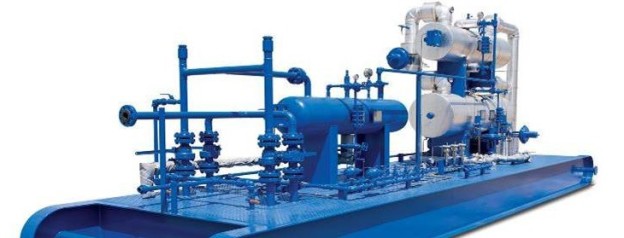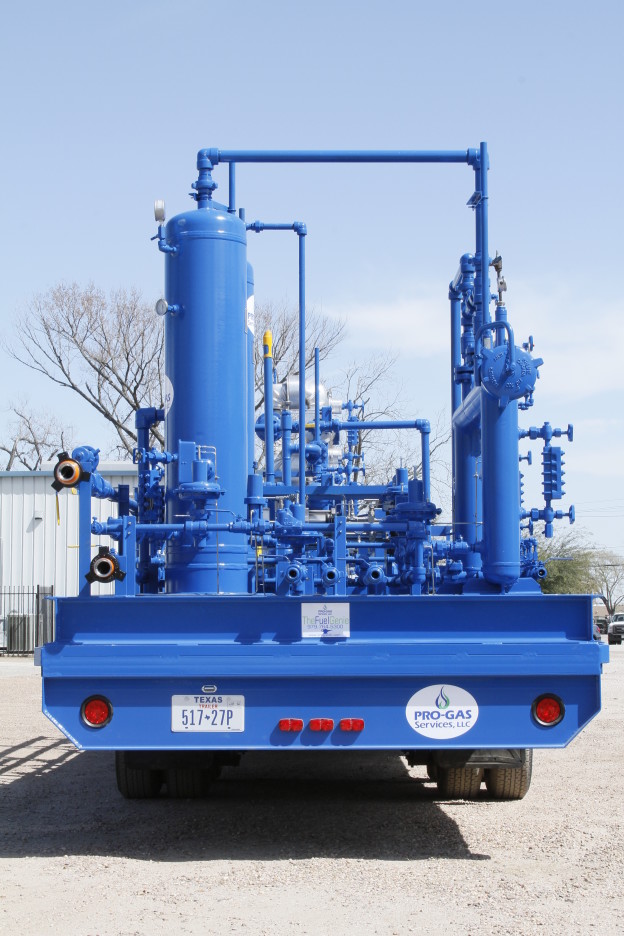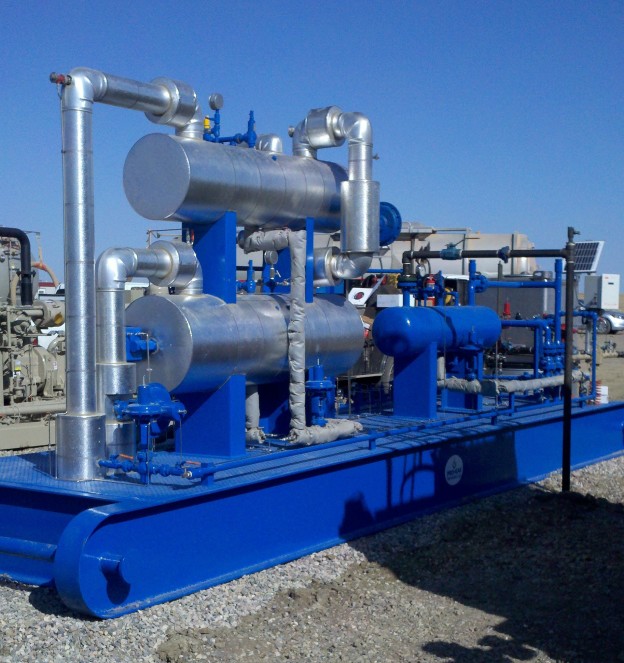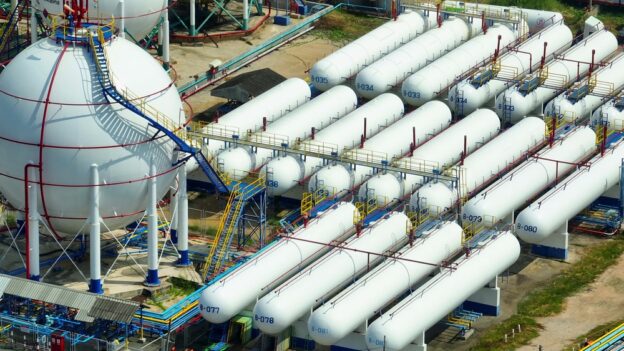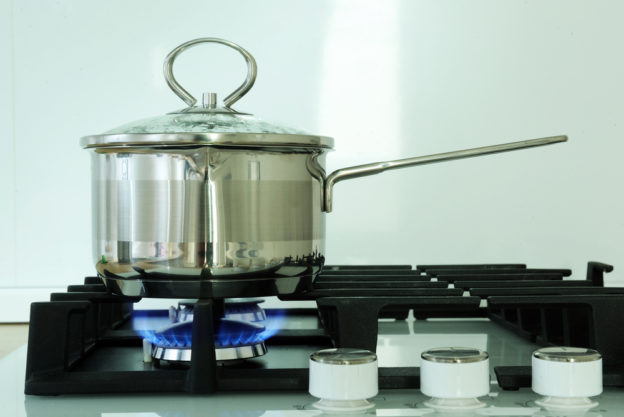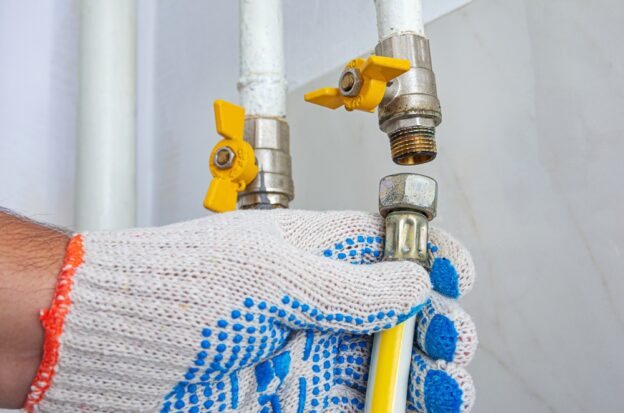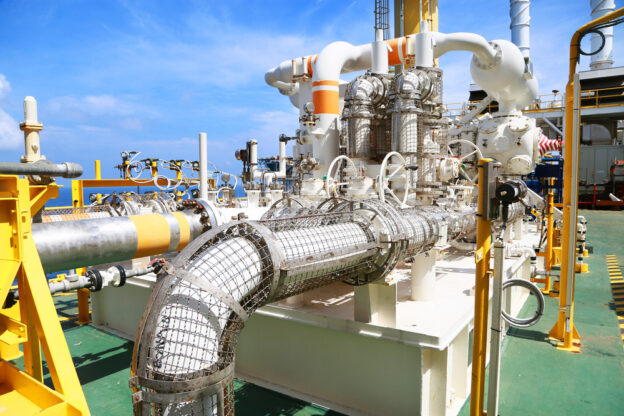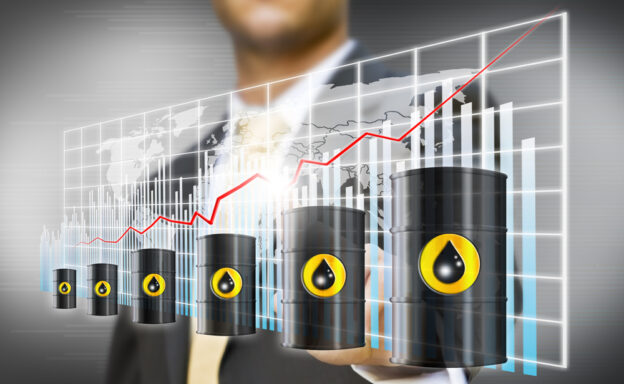The journey of natural gas from the wellhead to our homes and businesses is fraught with challenges, not least of which is the presence of water vapor. This seemingly innocuous component can lead to a host of problems, including pipeline corrosion, hydrate formation that can obstruct flow, and a reduction in the heating value of the gas. For decades, our industry has worked tirelessly to refine the methods and technologies employed to remove this water, and the evolution of natural gas dehydrators stands as a testament to that ongoing innovation.
Today, let’s explore how natural gas dehydrators have transformed over the years, from their nascent stages to the sophisticated systems we see today. We will go into the underlying principles, highlight key technological advancements, and discuss the immense impact these changes have had on efficiency, safety, and environmental stewardship within the natural gas sector.
Join us as we uncover the fascinating story of these essential pieces of equipment, examining their components, troubleshooting common issues, and looking ahead to the future of dehydration technology.
Early Days | Simple Solutions for Complex Problems
In the nascent stages of the natural gas industry, the need for dehydration was recognized out of necessity. Early methods were often rudimentary, yet effective for their time.
Calcium Chloride Dehydrators
One of the earliest approaches to natural gas dehydration involved the use of solid desiccants, particularly calcium chloride. We would pack a bed of anhydrous calcium chloride, which possesses a strong affinity for water, into a vessel. As wet natural gas passed through this bed, the calcium chloride would absorb the water vapor, forming a brine solution. This brine would then be drained, and the calcium chloride replaced or regenerated.
While seemingly simple, these early dehydrators played a crucial role in preventing some of the immediate issues caused by water in gas pipelines. They were relatively inexpensive to construct and operate, making them a viable option for smaller-scale operations. However, their limitations were also evident. The absorption capacity was finite, requiring frequent replenishment or regeneration of the calcium chloride, which could be labor-intensive and lead to operational downtime. The brine disposal also presented an environmental consideration, albeit a less understood one at the time.
Early Refrigeration Methods
Another early technique involved cooling the natural gas stream to condense the water vapor. This was based on the principle that the capacity of natural gas to hold water vapor decreases significantly at lower temperatures. By reducing the temperature of the gas, water would condense into a liquid form, which could then be separated and removed.
Initial refrigeration methods often relied on basic expansion cooling, leveraging the Joule-Thomson effect where a sudden drop in pressure leads to a temperature decrease. While this could achieve some level of dehydration, it was often limited by the achievable temperature drop and the energy requirements. These early systems were less precise in their dew point control compared to later advancements but marked an important step in recognizing the thermodynamic principles at play in natural gas dehydration.
The Glycol Revolution | A Paradigm Shift in Dehydration
The mid-20th century brought about a significant breakthrough with the widespread adoption of liquid desiccants, primarily glycols. This marked a profound evolution of natural gas dehydrators, setting the stage for the modern systems we know today.
The Rise of Diethylene Glycol (DEG)
Initially, diethylene glycol (DEG) emerged as a preferred liquid desiccant. We found that DEG, being hygroscopic, could effectively absorb water vapor from the natural gas stream. The process involved contacting the wet gas with lean (dry) DEG in an absorber tower. The DEG would then become rich (water-laden) and flow to a regenerator, where heat would be applied to boil off the absorbed water, allowing the regenerated lean DEG to be recycled back into the system.
DEG units offered a continuous process, which was a vast improvement over batch-style solid desiccant systems. They also allowed for better control over the dew point of the processed gas. However, DEG had its own set of challenges, including a relatively lower boiling point which could lead to glycol losses due to vaporization during regeneration, and a lesser capacity for dew point depression compared to its successors.
Triethylene Glycol (TEG) | Industry Standard
The true game-changer in liquid desiccant dehydration was the advent of triethylene glycol (TEG). With a higher boiling point and greater thermal stability than DEG, TEG allowed for more efficient water removal and significantly lower dew points. This advancement was critical for meeting increasingly stringent pipeline specifications and preventing hydrate formation more reliably.
A typical TEG dehydration unit, which we frequently design and service at Pro-Gas LLC, comprises several key components of a natural gas dehydrator:
- Contactor (Absorber) Tower: This is where the wet natural gas enters at the bottom and flows upward, counter-currently contacting the lean TEG flowing downward from the top. The water vapor is absorbed by the TEG.
- Flash Tank/Separator: After leaving the contactor, the rich TEG, still under pressure, enters a flash tank where dissolved hydrocarbons and some water vapor flash off due to a pressure drop. This gas is often recovered or used as fuel gas for the reboiler.
- Heat Exchanger: The rich TEG from the flash tank is preheated by the hot, lean TEG coming from the reboiler, improving the energy efficiency of the system.
- Reboiler: This is the heart of the regeneration process. The rich TEG is heated in the reboiler to a temperature sufficient to vaporize the absorbed water, which is then vented. The higher boiling point of TEG (around 400°F) compared to water (212°F) allows for effective separation.
- Stripping Gas: In many modern TEG systems, a small amount of dry natural gas or nitrogen is bubbled through the reboiler to “strip” additional water vapor from the TEG, further enhancing its purity and leading to lower dew points.
- Glycol Circulation Pump: This pump is responsible for moving the lean TEG from the reboiler back to the top of the contactor. Historically, gas-driven pumps were common, but electric pumps are increasingly used for their lower emissions.
The widespread adoption of TEG systems revolutionized natural gas processing, making large-scale, continuous dehydration economically feasible and environmentally safer. Their robust design and predictable performance cemented their status as the industry standard for decades.
Beyond Glycol | Diversification and Specialization
While glycol dehydration remains prevalent, the evolution of natural gas dehydrators has also seen the development and refinement of other technologies, often catering to specific gas compositions, desired dew points, or environmental considerations.
Solid Desiccant Dehydrators | Adsorption and Precision
Unlike the absorption process of glycols, solid desiccant dehydrators utilize an adsorption process. Materials such as molecular sieves, activated alumina, and silica gel have porous structures that physically trap water molecules on their surface. These systems are often favored when extremely low dew points are required, or when the natural gas contains components that could degrade glycols.
These units typically operate in a swing cycle (e.g., Pressure Swing Adsorption (PSA) or Thermal Swing Adsorption (TSA)), where one bed is actively adsorbing water while another is being regenerated by heating or depressurization. The key advantage here is their ability to achieve very dry gas, but they can be more sensitive to liquid slugs and particulate matter in the incoming gas stream.
Refrigeration Dehydration | Advanced Cooling Techniques
Modern refrigeration dehydration units have advanced significantly from their early counterparts. These systems often employ mechanical refrigeration or turbo-expanders to cool the gas to extremely low temperatures, causing water and heavier hydrocarbons to condense. The condensed liquids are then separated from the dry gas.
While effective for water removal, these systems are also highly efficient at recovering valuable natural gas liquids (NGLs), making them economically attractive in certain scenarios. They can be combined with hydrate inhibitors to prevent ice or hydrate formation at these low temperatures.
Membrane Separation Technology | A Growing Frontier
Membrane technology represents a more recent, yet rapidly developing, advancement in natural gas dehydration. Specialized polymeric or ceramic membranes are designed to selectively permeate water vapor while retaining the desired hydrocarbon components. These systems are typically compact, require less energy than traditional methods, and have a smaller environmental footprint due to the absence of chemical desiccants.
Membrane systems are particularly appealing for remote locations or smaller operations where the logistics of glycol or solid desiccant regeneration might be challenging. While still gaining wider adoption, we see immense potential in this area as membrane technology continues to improve in selectivity and durability. Consider linking to our article on [Advanced Gas Processing Technologies] for more information on membrane separation.
Troubleshooting | Optimization | Maintaining Peak Performance
Even with the significant evolution of natural gas dehydrators, operational challenges can still arise. Understanding common issues and implementing effective troubleshooting strategies are vital for maintaining system efficiency and longevity.
Common Operational Problems
At Pro-Gas LLC, we often encounter a range of issues when providing our comprehensive natural gas dehydrator services. The most common indicator of a problem is a high dew point in the outgoing gas, meaning the gas is not being dried sufficiently. This can stem from several factors:
- Insufficient Glycol Circulation: If the TEG is not circulating at the proper rate, it cannot effectively absorb water from the gas. This could be due to pump issues, clogged filters, or incorrect valve settings.
- Low Reboiler Temperature: The reboiler needs to reach a specific temperature (typically around 380-400°F for TEG) to effectively boil off water. If the temperature is too low, the glycol will not be adequately regenerated, leading to a “wet” lean glycol.
- Glycol Contamination or Degradation: Over time, glycol can become contaminated with hydrocarbons, solids, or breakdown products, reducing its water absorption capacity. High temperatures in the reboiler can also cause thermal degradation of the glycol.
- Foaming: Foaming in the contactor can severely impede the gas-liquid contact, leading to poor dehydration. This can be caused by excessive hydrocarbons, impurities, or changes in operating conditions.
- Poor Gas-Liquid Contact: Issues with internal components of the contactor, such as trays or packing, can disrupt the efficient mixing of gas and glycol, reducing water removal.
- Stripping Gas Issues: If stripping gas is used, an insufficient or excessive flow rate can negatively impact regeneration efficiency.
Proactive Maintenance and Best Practices
Preventative maintenance is paramount to avoiding costly downtime and extending the lifespan of your natural gas dehydrators. Our team at Pro-Gas LLC emphasizes the following best practices:
Regular Glycol Analysis: Periodically testing the glycol for water content, pH, hydrocarbon contamination, and degradation products helps identify issues before they escalate. This allows for timely glycol replacement or reclamation.
Filter Replacement: Filters in the glycol circulation system remove particulates and prevent fouling of equipment. Regular replacement, typically every 1-3 months, is crucial.
Reboiler Inspection and Cleaning: Fouling in the reboiler can reduce heat transfer efficiency. Regular inspection and cleaning of burner tubes or heating elements are essential.
Pump Maintenance: Glycol circulation pumps are critical components. Regular inspection for leaks, worn seals, and proper operation of check valves is necessary. For electric glycol circulation pumps, we always advise routine checks of electrical connections and motor performance.
Monitoring Operating Parameters: Continuously monitoring key parameters such as gas inlet and outlet temperatures, pressures, glycol circulation rate, and reboiler temperature allows operators to detect deviations from normal operation quickly.
Preventing Free Water Entry: Efforts should be made to remove free water upstream of the dehydrator to prevent overloading the system and potential foaming issues. This often involves efficient upstream separation.
By implementing these proactive measures, we help our clients minimize the risk of operational disruptions and ensure their dehydration units perform at peak efficiency.
Environmental Considerations and Future Trends
The evolution of natural gas dehydrators is not just about efficiency and performance; it’s increasingly about environmental responsibility. As an industry, we are committed to reducing emissions and operating more sustainably.
Minimizing Emissions | Reducing Our Footprint
Traditional glycol dehydrators, particularly those using gas-assist glycol circulation pumps, have historically been a source of methane and volatile organic compound (VOC) emissions from the reboiler vent. The wet “pneumatic gas” used to power these pumps, along with dissolved hydrocarbons in the rich glycol, can be released into the atmosphere during regeneration.
Significant efforts are underway to mitigate these emissions:
- Electric Glycol Circulation Pumps: Replacing gas-driven pumps with electric alternatives eliminates the associated methane emissions from the pump driver.
- Flash Tank Separators and Vapor Recovery Units (VRUs): Installing flash tank separators downstream of the absorber to capture flashed hydrocarbons and routing them to a fuel gas system or vapor recovery unit can significantly reduce emissions.
- Optimizing Glycol Circulation: Operating the dehydrator efficiently, with optimized glycol circulation rates and reboiler temperatures, reduces the amount of gas and water that needs to be processed, thereby lowering emissions.
- Rerouting Glycol Skimmer Gas: Any gas skimmed from the glycol loop can be rerouted to a combustion device or back into the process stream.
These advancements demonstrate our commitment to more sustainable operations, aligning with broader industry goals for environmental protection.
Innovations and Emerging Technologies
The future of natural gas dehydration promises even greater efficiency, lower environmental impact, and enhanced automation. We are constantly monitoring and exploring new developments, including:
Advanced Desiccant Materials: Research into novel materials like Metal-Organic Frameworks (MOFs) and graphene-based adsorbents suggests the potential for even higher water adsorption capacities and more efficient regeneration, leading to smaller, more energy-efficient units.
Hybrid Systems: Combining different dehydration technologies, such as absorption and membrane separation, into hybrid systems can leverage the strengths of each method, optimizing performance for specific gas compositions and conditions.
Process Intensification: Developing more compact and efficient designs for existing technologies, reducing the physical footprint and material requirements of dehydrators.
Automation and AI Integration: The integration of advanced sensors, automation, and artificial intelligence (AI) can enable real-time monitoring, predictive maintenance, and optimized control of dehydration units, leading to greater reliability and efficiency. This also minimizes the expertise required from operators in remote locations.
Renewable Energy for Dehydration: Utilizing solar, wind, or other renewable energy sources to power the reboilers and pumps in dehydration units is a significant step towards decarbonizing the dehydration process itself.
These innovations highlight a dynamic and evolving sector, driven by the continuous pursuit of excellence and sustainability. The evolution of natural gas dehydrators is far from over, and we are excited about the possibilities that lie ahead.
Your Natural Gas Hydrator Experts | Pro-Gas LLC
The journey of natural gas dehydrators, from their humble beginnings using calcium chloride to the sophisticated glycol and advanced membrane systems of today, is a compelling narrative of innovation driven by necessity. We have witnessed how the industry has consistently adapted, refined, and diversified its approaches to effectively remove water from natural gas, ensuring pipeline integrity, enhancing gas quality, and safeguarding operations.
At Pro-Gas LLC, we are proud to be at the forefront of this evolution, providing cutting-edge solutions and expertise in natural gas dehydration to clients across the Dallas area and beyond. We understand that reliable and efficient dehydration is not just about meeting specifications; it’s about optimizing performance, minimizing environmental impact, and ultimately, delivering a vital energy resource safely and effectively. The commitment to continuous improvement, evidenced by the development of more sustainable practices and the exploration of novel technologies, underscores our dedication to a brighter, more efficient energy future.
Are you looking to optimize your natural gas dehydration processes or explore the latest advancements in dehydration technology? Contact Pro-Gas LLC today for a comprehensive consultation. Our experienced team is ready to help you implement the most efficient and sustainable solutions for your operations. Let us partner with you to ensure your natural gas meets the highest quality standards, maximizes your operational efficiency, and minimizes your environmental footprint. Reach out to us through our website or by phone to learn more about how we can support your needs.
FAQ | Frequently Asked Questions About Natural Gas Dehydrators
Q. What is the primary purpose of a natural gas dehydrator?
The primary purpose of a natural gas dehydrator is to remove water vapor from the natural gas stream. This is crucial to prevent issues like pipeline corrosion, the formation of methane hydrates that can block pipelines and equipment, and to meet pipeline specifications for moisture content, which ultimately improves the heating value and quality of the gas.
Q. How has the evolution of natural gas dehydrators impacted environmental concerns?
The evolution of natural gas dehydrators has significantly addressed environmental concerns by moving towards more efficient and less emissive designs. Modern dehydrators incorporate features like electric glycol circulation pumps, flash tank separators, and vapor recovery units to reduce methane and VOC emissions that were historically associated with gas-driven pumps and reboiler vents.
Q. What are the main types of natural gas dehydrators used today?
Today, the main types of natural gas dehydrators include glycol dehydration units (primarily using Triethylene Glycol or TEG), solid desiccant dehydrators (utilizing materials like molecular sieves, activated alumina, or silica gel), refrigeration dehydration units, and increasingly, membrane separation systems. Each method has specific advantages depending on the desired dew point, gas composition, and operational requirements.
Q. What are the key components of a natural gas dehydrator?
For a typical glycol dehydration unit, the key components include the contactor (absorber) tower where gas and glycol meet, a flash tank or separator to remove dissolved hydrocarbons, a heat exchanger for energy efficiency, a reboiler to regenerate the water-laden glycol, and a glycol circulation pump to move the lean glycol back to the contactor.
Q. How can we troubleshoot common issues with natural gas dehydrators?
Troubleshooting common issues with natural gas dehydrators often involves checking for insufficient glycol circulation, ensuring the reboiler temperature is adequate for proper regeneration, monitoring for glycol contamination or degradation, identifying and addressing foaming in the contactor, and inspecting for poor gas-liquid contact due to internal component issues. Regular glycol analysis and preventative maintenance are also crucial.


